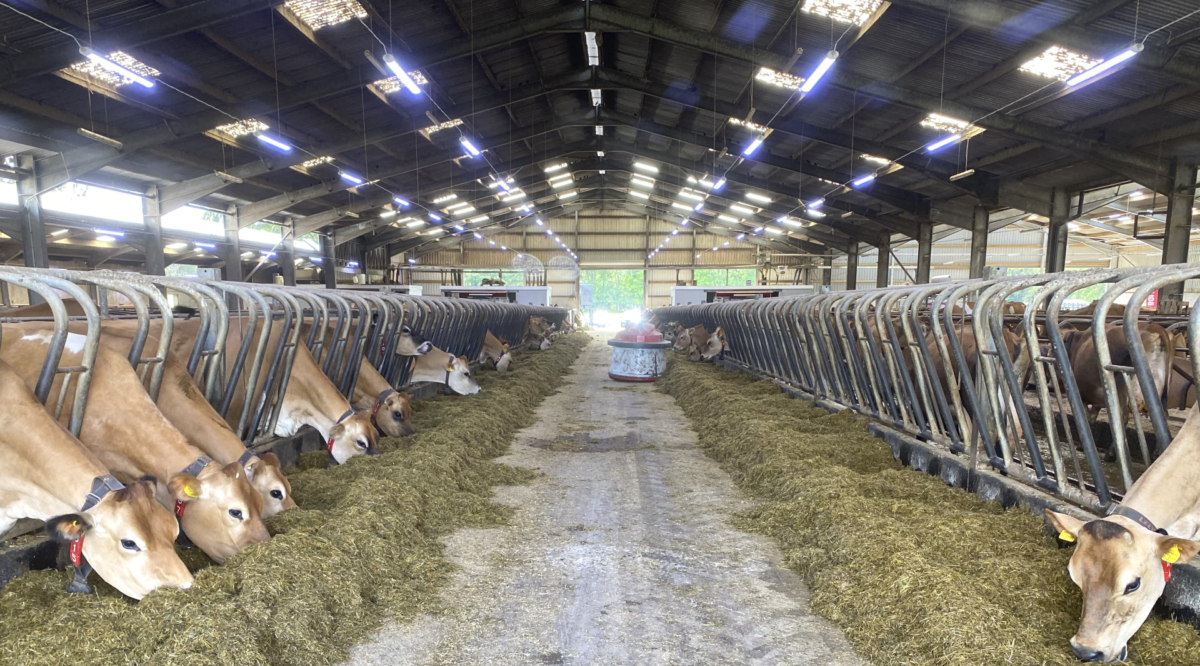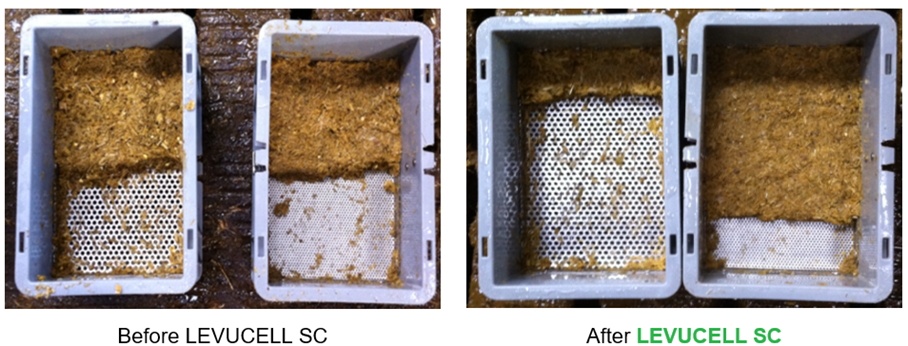Blog | Reading Time 4 minutes
Get more from winter rations with Levucell SC
Following a wet spring and a summer low in sunshine many farmers are facing a mixed bag when it comes to silage quality. Careful balancing of winter rations along with good management from clamp to cow will help to achieve consistent, efficient milk production.
This spring saw higher rainfall followed by an almost non-existent summer. This meant many farmers experienced one of two scenarios:
- delayed timing of cutting reducing nutrient density
- a wet cut diluting what little sugar was in the grass, with soil contamination increasing the risk of poor preservation quality.
Measure forage quality and quantity
It’s important to undertake analysis of your forages to gain an accurate picture of their quality. Trouw Nutrition’s silage analysis results reflect the challenge, showing a higher fibre index, lower digestibility (D-value) and reduced metabolisable energy (ME) compared to last year’s first cut.
Having lower digestibility silage can restrict milk from forage potential, but things can be done to improve forage utilisation and feed efficiency.
Measuring silage clamps and assessing the quantity of forages available is important. Starting planning for winter as early as possible should help you achieve consistent, efficient milk production in a financially and environmentally sustainable way.
Manage clamps for consistent quality
Pay close attention to clamp management and aim to feed a consistent ration every day.
To achieve this while minimising waste, feed out in a vertical column from the clamp to ensure silage quality is consistent in every mix.
Aim to move across the whole clamp face in less than three or four days. With very wide clamp faces, take shallower grabs rather than full grabs. This will help to avoid silage being exposed to oxygen for too long, which can worsen the aerobic stability of the silage.
You may have silage quality or dry matter which differs significantly between cuts, but fermentation quality is good thanks to appropriate inoculant use. In this case, feed more than one cut at once for better diet consistency, even if it means opening another clamp.
Manage winter ration delivery to maximise intakes and feed efficiency
How the ration is delivered should be another area of focus. Feed out wagon mixed rations between milkings, not at milking time. This increases feeding bouts and can improve feed efficiency by as much as 7%.
Pushing feed up regularly and feeding twice a day or more increases dry matter intakes and reduces sorting. This leads to increased lying time and improved rumination activity.

Feeding rumen-specific yeast Levucell SC boosts fibre digestion and feed efficiency
Adding a proven rumen modifier to the ration unlocks more energy from fibre and gets more out of the diet overall.
Including a rumen modifier will prove particularly beneficial this year. It will help to compensate for any shortcomings in the digestibility of forage cost-effectively. In research trials, depending on the acid load level of the diet, the NDF digestibility of grass silage in the rumen increased by 5-9% in the presence of the rumen-specific live yeast, Levucell SC. This increases feed efficiency and milk yield.
Practical observations from including Levucell SC in the diet
Adding LEVUCELL SC to ruminant diets maximises rumen function. Manure sieving before and three weeks after introduction typically shows improved fibre digestion, providing there hasn’t been any significant change in ration composition. Producers often report dairy cows having better resting and ruminating behaviour, body condition, cleanliness (especially at grass) and manure consistency.

Return on investment
Results from 14 trials in mid to late lactating dairy cows (1,615 animals) show an average improvement in feed efficiency of 50g of extra fat corrected milk per kilo of dry matter intake from including Levucell SC in the diet. There was a corresponding increase in milk production of 1.1kg per day.
Fed before calving, the yeast reduces body weight loss and promotes early lactation feed intake. Combined with improved feed efficiency during lactation, this can improve milk yields by up to 8%. This can make a significant contribution to sustainable milk production.
Results from 5 trials in transition dairy cows showed an average increase in dry matter intake of 1.5kg during the first 30 days in milk. There was a corresponding increase in milk production of 2.3kg per day. There was also a reduction in bodyweight loss of 0.7kg per cow per day.
Need some help?
Contact out teamPublished Nov 27, 2024 | Updated Dec 19, 2024
Related articles
Need specific information?
Talk to an expert